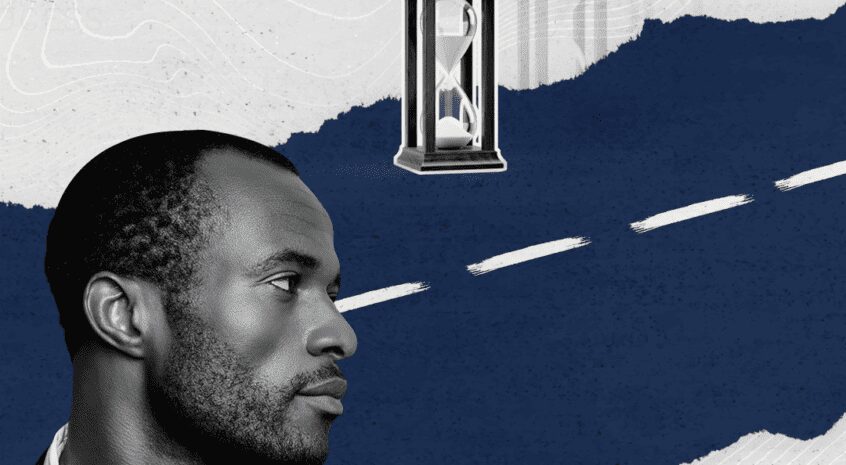
Last month, a federal contractor in Tysons Corner called me about their $2.3 million system implementation.
Three months behind schedule. Budget blown. Technical team working overtime.
“The servers are running perfectly,” the project manager told me. “Integration testing passed. But nobody’s using the new system.”
Sound familiar?
Here’s what he missed. And what 90% of project managers miss every single day.
The Architecture Everyone Ignores
You know what gets attention in project management? Technical architecture.
Network diagrams. System integrations. Database schemas. API documentation.
Months of planning. Detailed specifications. Every technical component mapped to perfection.
But there’s another architecture in every project. One that determines whether your technical masterpiece becomes a success story or an expensive shelf ornament.
Human architecture.
The Numbers Don’t Lie
Poor change management delivers 35% ROI. You lose 65 cents on every dollar spent.
Excellent change management delivers 143% ROI. You gain 43 cents on every dollar.
That’s a 108-point swing based purely on how well you handle the human side.
Yet most project managers spend months perfecting technical solutions and minutes planning change adoption.
The result? People problems consistently cost more than technical problems.
Why Smart People Make This Mistake
Project managers love technical challenges because they’re predictable.
If server A needs to talk to database B, you configure the connection. Test it. Document it. Done.
People are messier.
Sarah from accounting might resist the new expense system because she’s worried about job security. The regional managers might ignore your rollout because they’re already overwhelmed with the quarterly review process.
These human factors don’t appear in your Gantt chart. But they’ll kill your project faster than any technical bug.
The Hidden ROI Killer in DC Metro Projects
Federal contractors and government agencies in the DC area see this pattern repeatedly.
Technical requirements get locked down early. Security clearances checked. Compliance boxes ticked.
But when deployment day arrives, user adoption crawls along at 20%.
Why? Because nobody has mapped the human architecture.
Nobody identified that the GS-14 who’s been doing things the same way for 15 years will need a different approach than the fresh-faced analyst straight out of Georgetown.
Nobody planned for the fact that Department A and Department B have competing priorities that will affect system adoption.
Nobody designed communication strategies for different stakeholder groups.
What Human Architecture Actually Looks Like
Human architecture isn’t soft skills fluff. It’s systematic planning with measurable components.
Stakeholder Impact Assessment
Map every person affected by your project. Not just users – everyone whose work changes.
Rate impact level from 1-5. Identify resistance sources before they become problems.
Communication Strategy Design
Different stakeholders need different messages at different times.
Your C-suite wants ROI projections. Your end users want to know how this makes their job easier.
One-size-fits-all communication is one-size-fits-nobody communication.
Resistance Management Planning
Resistance isn’t personal. It’s predictable.
People resist change when they lack information, when they fear negative consequences, or when they feel excluded from the process.
Address these root causes proactively instead of reacting to pushback.
Adoption Measurement Systems
You can’t manage what you don’t measure.
Track user engagement rates, feature utilization, support ticket patterns, and productivity metrics.
Set adoption targets and build intervention plans for when you miss them.
The Real Cost of Getting This Wrong
Here’s what happens when you nail the technical architecture but ignore human architecture:
Your $500K software implementation becomes a $1.2M lesson in change management.
Your team spends six months building the perfect solution for problems people don’t think they have.
Your stakeholders smile in meetings and use workarounds behind closed doors.
Your project gets labeled as “technically successful but practically failed.”
The Pattern Break Most Project Managers Miss
Every successful project has two parallel work streams running simultaneously.
Workstream 1: Building the solution. Workstream 2: Building the adoption.
Most project managers focus 90% of their attention on Workstream 1.
The top 10% split their focus 60/40.
That 40% investment in human architecture is what separates project managers who deliver adoption from project managers who deliver software nobody uses.
Why This Matters More in Government and Federal Contracting
Government projects face unique human architecture challenges.
Longer procurement cycles mean stakeholder fatigue before implementation even begins.
Multiple approval layers create communication bottlenecks.
Risk-averse cultures make change adoption slower and more complex.
Agency mission requirements often conflict with user convenience.
These factors don’t disappear with better technical planning. They require dedicated human architecture strategies.
The Simple Framework That Changes Everything
Start every project with four human architecture questions:
- Who will use this solution daily?
- Who has the power to kill this project?
- What’s the biggest fear each stakeholder group has about this change?
- How will we know if adoption is succeeding?
Answer these before you write a single line of code or configure a single system.
Build your human architecture plan parallel to your technical architecture plan.
Review both plans weekly, not just the technical one.
What Excellence Looks Like
Excellent human architecture doesn’t happen by accident.
It starts in project planning with stakeholder impact assessments.
It continues through design with user experience validation.
It accelerates during implementation with targeted communication strategies.
It sustains after go-live with adoption measurement and course correction.
The project managers who master both technical and human architecture don’t just deliver projects on time and on budget.
They deliver projects that actually solve problems people care about.
The Bottom Line
Technical problems have technical solutions.
People problems have people solutions.
Your next project’s success depends more on human architecture than technical architecture.
Yet most project managers still plan like people problems will solve themselves.
They won’t.
Curious how to master project leadership that balances both technical delivery and human adoption? Let’s talk.

